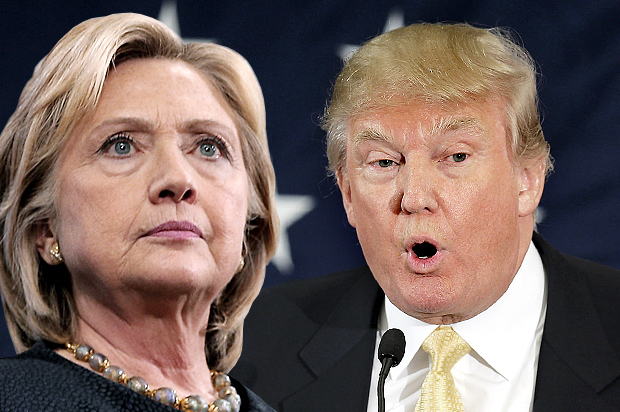It’s impossible to find agreement about anything in American politics today, including the facts. But if there’s one thing nearly all Americans share, it’s a disgust for our broken two-party system. It’s no surprise, therefore, that a new Gallup study shows party identification at or near historical lows.
“For the fifth consecutive year,” the report says, “at least four in 10 U.S. adults idenitifed as political independents. The 42 percent identifying as independents in 2015 was down slightly from the record 43 percent in 2014. This elevated percentage of political independents leaves Democratic (29%) and Republican (26%) identification at or near recent low points, with the modest Democratic advantage roughly where it has been over the past five years.”
This is part of a decades-long trend. Since 1988, when Gallup began conducting polls on partisanship, fewer Americans have identified as Republican and Democrat and more have identified as independents. In 1988, for example, only 33 percent of the country self-identified as political independents (36 percent were Democrats and 31 percent were Republicans). That’s dramatically different from the latest numbers.
There are several reasons for the gradual decline in partisan identification. According to Gallup’s Jeffrey Jones, much of the unrest stems from dysfunction and paralysis in D.C.:
“The rise in political independence is likely related to Americans’ frustration with party gridlock in the federal government. In the past several years, dissatisfaction with the government has ranked among the leading issues when U.S. adults are asked to name the most important problem facing the U.S., and was the most frequently mentioned problem in 2014 and 2015.”
Frustration with both parties’ handling of the economy, unemployment and immigration ranked as the next most frequent complaints.
The Gallup poll reflects a deepening discontent with our current system. People often assume the two-party structure is implied or outlined in the Constitution, but it isn’t. One could argue the process was designed so as to make the formation of such a system inevitable, but that’s a different conversation. The fact is, it wasn’t until the 1830s, when the Democratic Republican party – effectively the nation’s only party at the time – disagreed about whether to have a national bank or an independent treasury that the modern two-party system was born.
Since then two parties have dominated the process, focusing more on self-interest and branding than on governing the country. Things have gotten significantly worse in the current media culture. Politics is now a marketing contest, governed by the laws of public relations, not a debate about what ought to be done. This has been disastrous for the country, regardless of where you fall on the ideological spectrum. Some of these problems would persist under any system, but they’re exacerbated by the two-party structure.
Both parties, to varying degrees, have developed interests separate and apart from those of the country. Controlled by the corporate class, they’ve become incapable of compromise (this is especially true of the modern GOP, whose only legislative goal in recent years has been to obstruct President Obama). In 2011, Matt Miller summed up the reasons for this in the Washington Post:
“First, both parties’ chief aim is to win elections, not solve problems. Second, both parties are prisoner to interest groups and ideological litmus tests that prevent them from blending the best of liberal and conservative thinking. Finally, neither party trusts us enough to lay out the facts and explain the steps we need to take to truly fix things.”
Ultimately, both parties are too invested in the status quo or too tethered to entrenched constituencies to do what’s necessary to change. Both, moreover, are corrupted by the same monied interests, which results in a kind of ideological leveling. Most people have noticed that the gap between Republicans and Democrats is more rhetorical than it is substantive, and that’s not an accident. There are real differences, of course, but those differences rarely translate into policy, and citizens have had enough of it. Although they’re vastly different (in almost every way), the success of Trump and Sanders this cycle speaks to the disillusionment with party elites – on both sides. Given the results of the Gallup poll, this should surprise no one.
The good news: Because the two-party system isn’t mandated in the Constitution, it need not exist. Both parties only exist to the extent that they have members. If voters should decide one day to abandon the parties, to become independent voters, the parties would cease to be — or at the very least they’d lose their grip on the process. And while we’re nowhere near the death of the two-party system, it appears we’re getting closer every year.
And that’s probably a good thing.

